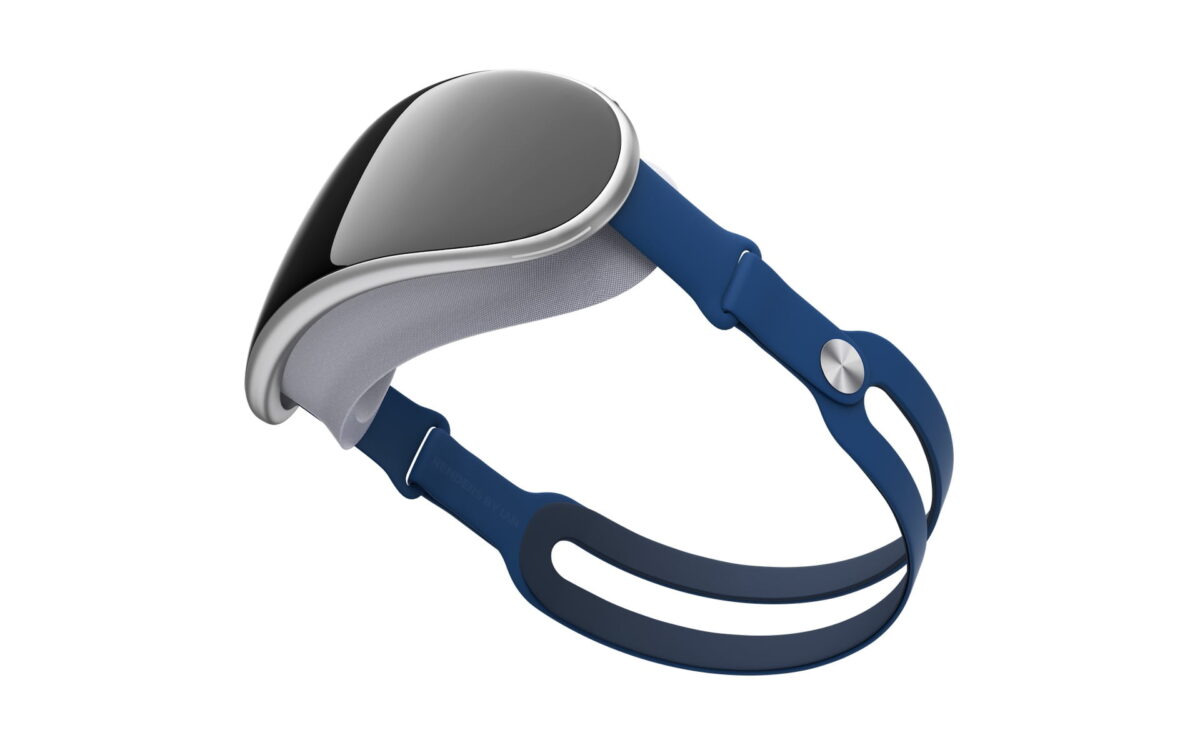Apple's first headset will be an experiment without experiments

Apple will probably unveil its first VR AR headset in a few months. It will be an experiment without experiments - and that is good for the industry.
The rumors about Apple's XR headset have been with us for years. In a few months, it might finally be time: According to Apple analyst Ming-Chi Kuo, the VR AR headset will be launched or at least unveiled in January 2023. Mass production is expected to start this summer.
Bloomberg's Apple reporter Mark Gurman also believes the unveiling will happen soon and reports that Apple's new M2 chip with 16 gigabytes is built into the current Prototype.
This would give the XR headset a clear hardware advantage over Meta's Cambria, which likely relies on an improved version of Qualcomm's XR2 chip and 12 gigabytes of RAM. Apple is also said to be using advanced micro OLED displays with 3K resolution per eye.
With fast hardware, a strong focus on AR, and a premium VR display at the same time, Apple is building its most complicated product yet, Kuo believes. He even talks about a "Post-Meta era": the industry will imitate Apple in the future.
Content
Apple knows hardware and software
But that will take more than hardware innovation. Meta recently gave a glimpse into its VR lab, focusing on future key optical technologies for VR headsets. But so far, there is little information about software and applications for Meta's Cambria.
Apple, on the other hand, already has a comprehensive software ecosystem and will integrate its headset into it. No other company is as well positioned to solve the key problems of the next wave of computing as Apple, writes MIXED colleague Tomislav.
Meta, on the other hand, has "only hardware" and relies on the goodwill and interfaces of other companies for software, like Google's Android, which is Quest 2's operating system foundation. Apple, he says, can bridge the gap between new and old technology with its usual top-notch hardware, fast chips and integration with the Apple system.
Apple’s XR headset will continue a tradition
In many areas, Apple hardware is synonymous with first-class workmanship, intelligent design and an optimal symbiosis of hardware and software.
With the first Apple chip, the M1, the company has also shown that it can produce its own processors that mercilessly outperform the competition. Once again, Apple has thus forced a massive shift in the hardware market: the switch from x86 processors to ARM-based chips for mobile computers. Corresponding hardware from Qualcomm will not appear until 2023 at the earliest.
Apple's XR headset will continue this tradition of high-quality hardware - anything else would be a marketing disaster.
Smartphone race and face computers
Will other companies imitate Apple or not? The truth probably lies between these two poles.
A good clue is the years of competition between Apple's iPhone and Android smartphones. Apple almost single-handedly founded the smartphone category. The iPhone was more than the sum of its parts. But after the iPhone moment, Apple and Android manufacturers took turns at hardware and software innovation. A dominant innovation driver can no longer be discerned.
A similar development can be expected in the XR segment, minus the iPhone moment. After all, XR headsets for office use exist at the latest with Meta's Cambria. Apple will just build them better, more expensively, and with excellent software integration.
Still, Apple's product will also be far from the sci-fi version of the ultimate flat XR headset that will replace monitors, mice and keyboards in offices around the world.
On the hardware side, however, I expect the ultimate face computer yet: high resolution, good lenses, good cameras and sensors, comfortable fit, integrated audio, and fast hardware. Target audience: technology enthusiasts. Experiments: Missing.
Apple’s XR headset kicks off the platform war
Apple's XR headset will be conservative, an optimized high-end product in the young tech sector: brain-computer interfaces, haptic feedback against motion sickness or other technologies whose benefits are not yet proven will be ignored by Apple.
The target group will be clearly identifiable via the applications and entertainment features. Apple will not reinvent the wheel, it will just put more effort into making its own product productive.
Those who expect Apple's XR headset to fulfill the hopes for a mass market breakthrough, which have been disappointed again and again since 2016, are still under an illusion about the potential of what is currently technically possible.
But that is a good sign. Apple's entry shows that the time for wild experimentation is over. The XR headsets are reaching a level of product maturity that makes them a promising market for the world's most valuable company.
For now, Apple won't compare this market to the smartphone market. The metaverse is still a long way off, and reportedly not relevant to Apple anyway. In the best case, the sales figures of the Apple headset will exceed those of Meta's Quest 2 - that would already be a fantastic success.
Apple's market entry will be the starting signal for a race where innovations on the hardware and software side will be shared by all parties. Meta will continue to play a central role on the hardware side and must prove with Cambria that it can enable software integration for existing ecosystems. Google, Microsoft and others will also be eager to get in the game.
As Oculus founder Palmer Luckey said in 2016 at the launch of the Oculus Rift, "The platform wars are inevitable."
Note: Links to online stores in articles can be so-called affiliate links. If you buy through this link, MIXED receives a commission from the provider. For you the price does not change.